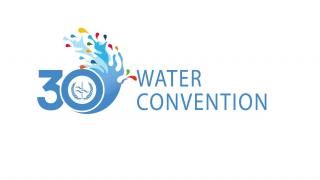Helsinki Convention Celebrates Its 30th Anniversary
Water Quality Protection Measures Hailed As Success
28 Jul 2022 by The Water Diplomat
TALINN, Estonia

Although water can be the subject of conflict, it is equally a powerful vehicle for cooperation. The latter is well demonstrated through the Helsinki Convention, which celebrated its 30th anniversary in Talinn, Estonia, from 28-30 June 2022.
The Helsinki Convention, formally known as the Convention on the Protection and Use of Transboundary Watercourses and International Lakes, was adopted, as the name suggests, in Helsinki in 1992. Although initially developed as a regional framework for transboundary water management and protection in Europe, it has extended its scope beyond the European Region since 2013. The Helsinki convention is known amongst other things for its protection of water quality and water related ecosystems, as well as its broad protection of groundwater sources.
Starting with Chad, Senegal, Ghana, Guinea Bissau and Togo, more and more countries acceded to the Convention, and it now counts 46 member states. This has strongly boosted transboundary integrated water resources management across the world: on average, countries which have acceded to the Convention score 80% on indicator SDG 6.5.2, as compared to and average of 58% for the rest of the world.
In addition, the Convention is a framework agreement which provide the broad parameters for cooperation under which many more detailed agreements are negotiated at river basin level. There are currently a total of 186 transboundary water agreements reported by the parties, of which some, such as the recently signed agreement on the Senegalo-Mauritanian aquifer, are remarkable for their vision and ambition.
The geographical reach of the Convention now stretches from the Sixaola basin in Central America to the Lower Mekong basin in Asia. It has a protocol on water and health which links sustainable water management to the prevention of water related diseases and as such is a firm basis for the implementation of the human right to water, also inspired by the right to health.
